American Alligator Vs Saltwater Crocodile Size, Weight, Overall Comparison
In contemplating a potential encounter between an American alligator and a saltwater crocodile, we delve into the shared and distinct characteristics of these apex reptiles. Differing notably in size, weight, and strength, a direct confrontation would likely result in the saltwater crocodile prevailing due to its superior physical attributes, including size, weight, bite force, and aggression. This analysis outlines these differences, emphasizing the factors that contribute to the potential dominance of a saltwater crocodile in such a formidable match.
American Alligator vs Saltwater Crocodile: Assessing Differences and Predicting a Confrontation
In a potential face-off between an American alligator and a saltwater crocodile, the outcome is shaped by their shared crocodilian ancestry and pronounced differences in size, weight, strength, and aggression. Key distinctions in bite force and overall dominance contribute to the dynamics of a confrontation, where the saltwater crocodile’s superior physical attributes establish it as the likely victor.
I). Size and Weight Disparities:
– Saltwater crocodiles are significantly larger and heavier than American alligators. This size and weight difference become decisive factors in determining the likely outcome in a direct confrontation.
II). American Alligator’s Characteristics:
– American alligators, while formidable in their own right, are relatively smaller and lighter than saltwater crocodiles. Their robust build and powerful bite force are noteworthy, but they face a size disadvantage against their saltwater counterparts.
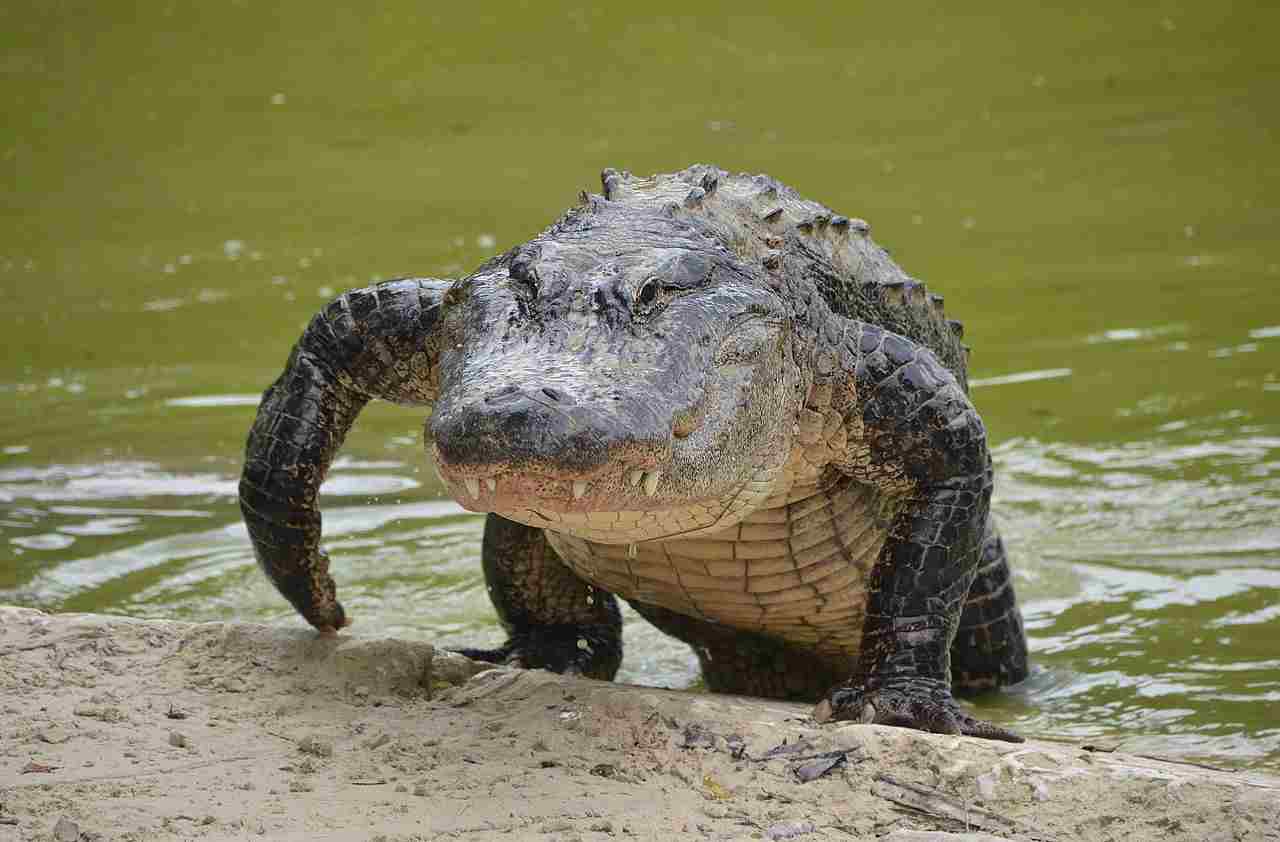
III). Saltwater Crocodile’s Characteristics:
– Saltwater crocodiles, known for their colossal size and adaptability to marine environments, boast greater strength and size. These traits, coupled with an aggressive disposition, position them as apex predators in a variety of ecosystems.
IV). Strength and Bite Force:
– The saltwater crocodile’s superior size and strength give it a clear advantage in a direct fight. Additionally, their more powerful bite force further amplifies their capability to overpower an American alligator.
V). Aggressiveness:
– Saltwater crocodiles are renowned for their aggressive nature, particularly when defending territory or confronting potential threats. This aggressiveness, combined with their size and strength, contributes to their dominance in confrontations.
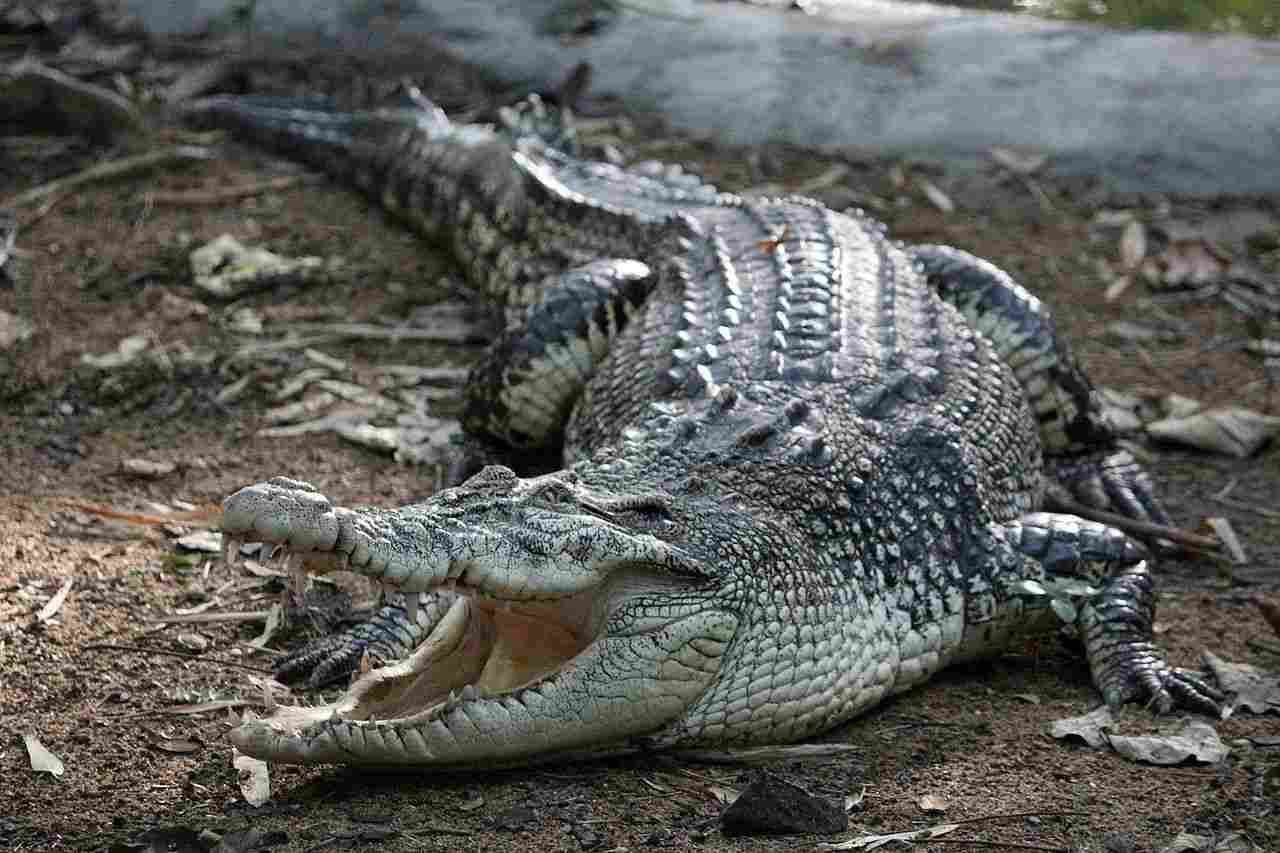
VI). Real-World Dynamics:
– In real-world scenarios, where encounters between these apex reptiles might occur, the saltwater crocodile’s size, strength, bite force, and aggressiveness are likely to play pivotal roles in establishing dominance over an American alligator.
VII). Overall Dynamics:
– In a direct confrontation, the saltwater crocodile’s superior size, weight, strength, bite force, and aggressiveness establish it as the likely victor against an American alligator. These pronounced differences in physical attributes highlight the formidable nature of the saltwater crocodile within the crocodilian family.
*Details of Comparison
| Criteria | American Alligator |
Saltwater Crocodile
|
| Taxonomy | Class: Reptilia, Order: Crocodylia, Family: Alligatoridae, Genus: Alligator, Species: mississippiensis |
Class: Reptilia, Order: Crocodylia, Family: Crocodylidae, Genus: Crocodylus, Species: porosus
|
| Appearance | Broad, U-shaped snout, Dark, rough, armored skin |
Longer, V-shaped snout, Lighter, smoother skin
|
| Size | Males: 11 to 15 feet, Females: 8 to 10 feet |
Males: Exceeds 20 feet, Females: 10 to 13 feet
|
| Weight | Males: 500-1,000 pounds, Females: Generally lighter |
Males: 2,000 pounds or more, Females: Significantly lighter
|
| Bite Force (PSI) | Estimated around 2,125 PSI |
Estimated > 3,000 PSI
|
| Offensive Advantages | Powerful bite, ambush predator |
Strong bite, pointed snout, agile in water
|
| Defensive Advantages | Tough, armored skin, quick movements on land |
Robust body structure, thick skin, agile on land and water
|
| Speed | Up to 20 mph |
Up to 18 mph in water
|
| Agility | Agile in water and on land |
Highly agile in water
|
| Senses | Acute hearing, night vision, tactile sensors |
Well-developed vision, sense of smell, jaw sensors
|
| Overall Physical Capacity | Robust build for ambush hunting |
Streamlined body for efficient swimming
|
| Habitat Preference(s) | Freshwater habitats |
Coastal areas, estuaries, mangrove swamps
|
| Tracks | Clawed, webbed footprints with tail drag mark |
Similar clawed footprints, may lack tail drag mark
|
| Lifespan | 30 to 50 years in the wild |
Over 70 years in the wild
|
| Mode of Feeding | Ambush predator, smaller prey |
Opportunistic, can prey on larger animals
|
| Intelligence | Basic problem-solving skills |
Highly intelligent among reptiles
|
| Social Behavior | Generally solitary |
Can exhibit social behavior, dominance hierarchies
|
| Reproduction | Oviparous, temperature-dependent sex determination |
Oviparous, temperature-dependent sex determination
|
| Parental Behavior | Limited maternal care beyond nesting period |
Maternal protection during nesting period
|
| Proximity to Humans | Found in freshwater habitats near human settlements |
Inhabits coastal areas near human populations
|
| Behavior Toward Humans | Generally avoids confrontations, rare attacks |
More unpredictable and aggressive, higher number of attacks
|
| Danger Posed to Humans | Low to moderate danger |
Higher danger, more fatal attacks
|
| Associated Precautions | Public education, responsible behavior |
Strict guidelines, exclusion barriers
|
| Conservation Status | Least Concern (IUCN) |
Least Concern globally, with regional variations
|
| Conclusion |
Both apex predators with unique ecological roles, yet differences in size, behavior, and habitat preferences underscore the need for tailored conservation efforts.
|
1. Taxonomy:
American Alligator (Alligator mississippiensis):
Class: Reptilia
Order: Crocodylia
Family: Alligatoridae
Genus: Alligator
Species: mississippiensis
Saltwater Crocodile (Crocodylus porosus):
Class: Reptilia
Order: Crocodylia
Family: Crocodylidae
Genus: Crocodylus
Species: porosus
2. Appearance:
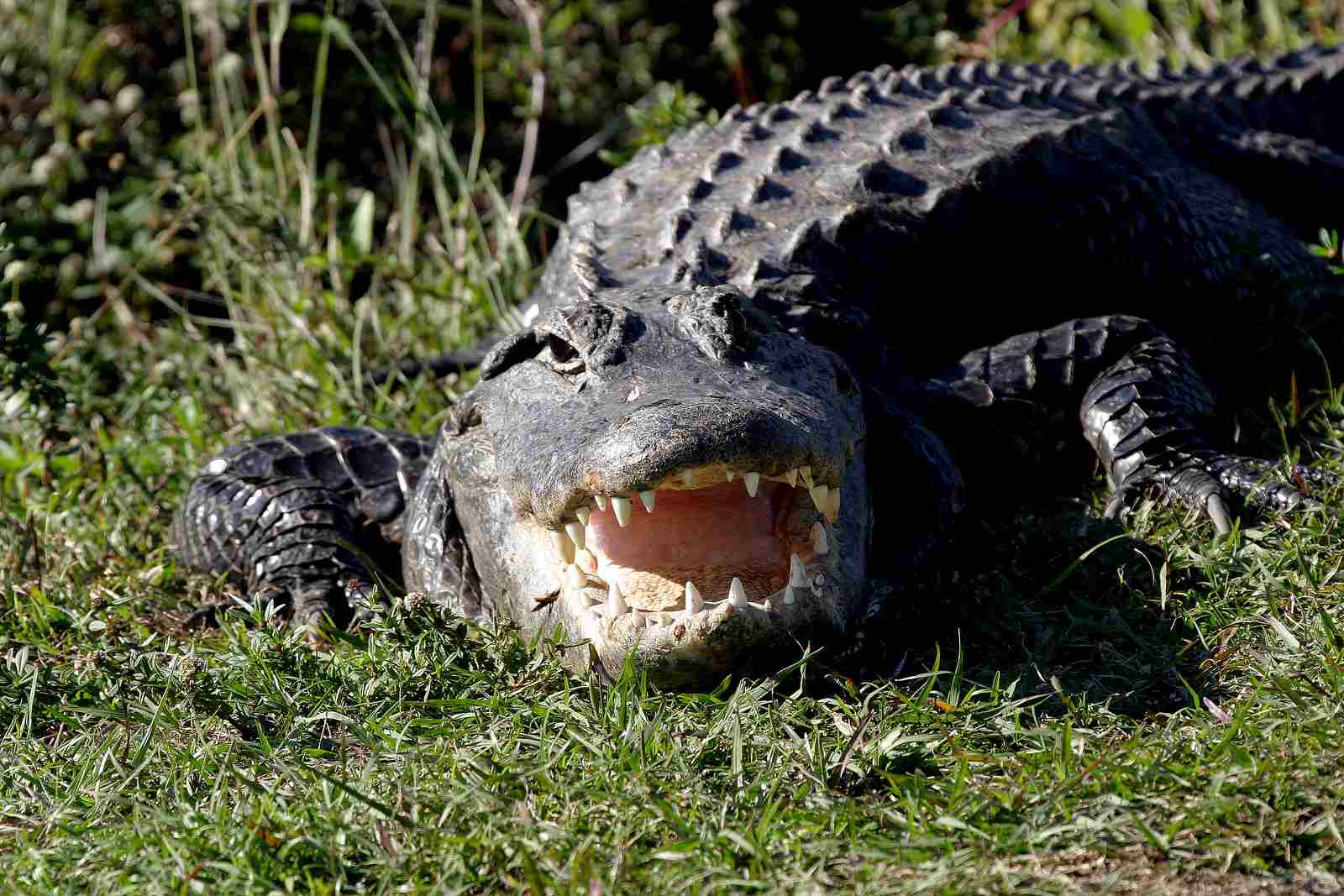
American Alligator:
Broad, U-shaped snout
Dark coloration with a rough, armored skin
Often has a shorter and more rounded snout compared to crocodiles
Saltwater Crocodile:
Longer, V-shaped snout
Lighter coloration with a smoother skin
Generally, a more streamlined appearance than alligators
Comparison:
Alligators tend to have a bulkier build, while crocodiles are sleeker.
Alligators have a broader snout, adapted for a more generalist diet.
Crocodiles possess a more pointed snout, aiding in catching prey like fish.
Ecological Implications:
The differences in appearance reflect their adaptations to specific ecological niches.
Alligator’s build suits freshwater habitats, while the crocodile’s streamlined body is advantageous in coastal environments.
3. Size:
American Alligator:
Adult males: 11 to 15 feet (3.4 to 4.6 meters)
Adult females: Smaller than males, usually around 8 to 10 feet (2.4 to 3 meters)
Saltwater Crocodile:
Adult males: Can exceed 20 feet (6 meters)
Adult females: Typically smaller than males, around 10 to 13 feet (3 to 4 meters)
Comparison:
Saltwater crocodiles are generally larger than American alligators.
Size differences contribute to distinct ecological roles and potential prey preferences.
Ecological Implications:
Larger size in crocodiles may impact their position as apex predators, influencing the balance of ecosystems.
4. Weight:
American Alligator:
Adult males: 500 to 1,000 pounds (227 to 454 kilograms)
Adult females: Generally lighter than males
Saltwater Crocodile:
Adult males: 2,000 pounds (907 kilograms) or more
Adult females: Significantly lighter than males
Comparison:
Saltwater crocodiles exhibit a substantial weight advantage over American alligators.
Weight variations contribute to differences in hunting strategies and prey selection.
Ecological Implications:
Crocodile’s greater weight may influence their role in shaping ecosystems and interactions with other species.
5. Bite Force (PSI):
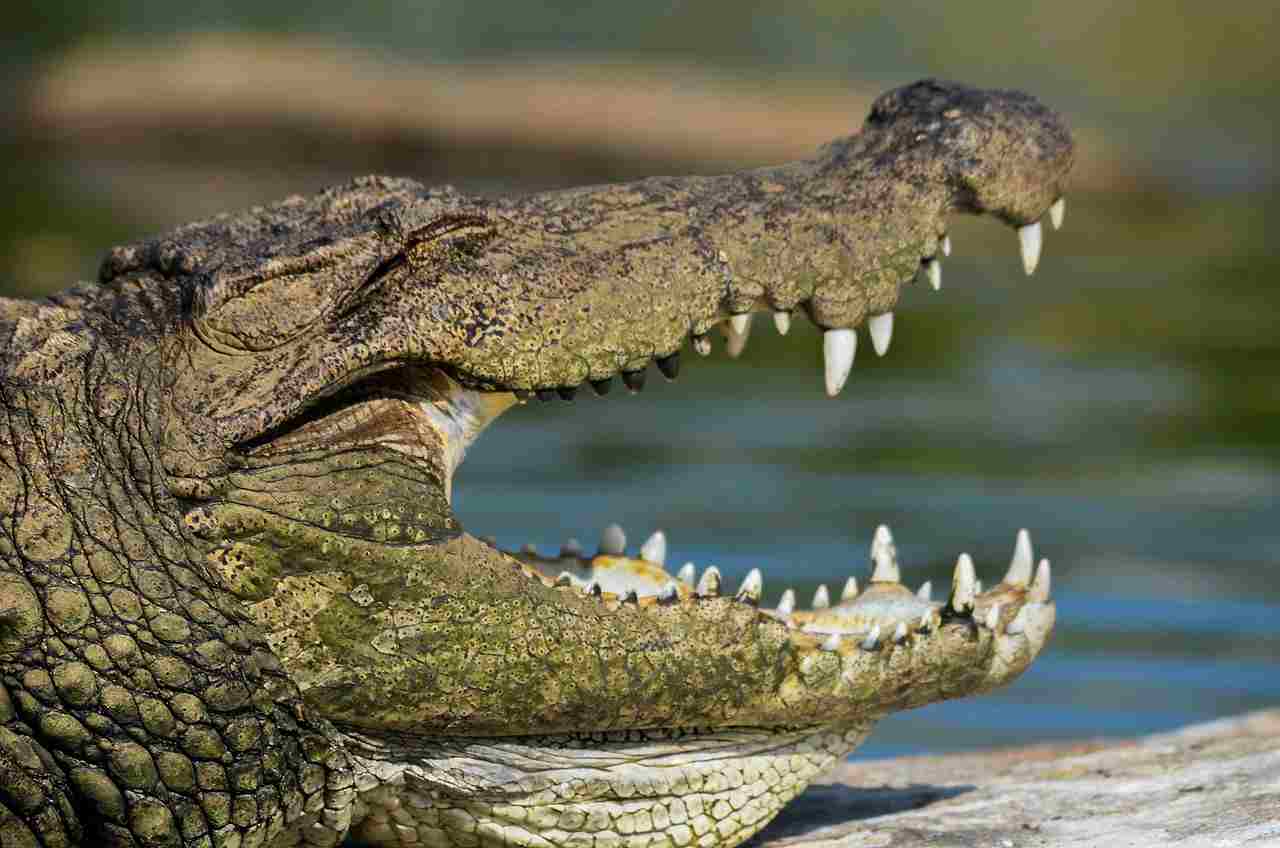
American Alligator:
Estimated to be around 2,125 PSI
Saltwater Crocodile:
Estimated to have one of the strongest bite forces among living crocodilians, exceeding 3,000 PSI
Comparison:
Saltwater crocodiles possess a more powerful bite force compared to American alligators.
Bite force is correlated with hunting strategies and prey types.
Ecological Implications:
Crocodile’s powerful bite contributes to their ability to capture and subdue larger prey, affecting the dynamics of their ecosystems.
6. Physical Offensive Advantages:
American Alligator:
Powerful bite and jaw strength
Ambush predator, often lunging at prey from the water’s edge
Saltwater Crocodile:
Strong bite, enhanced by a more pointed snout
Agile in water, capable of swift attacks
Comparison:
Alligators excel in surprise attacks from a concealed position.
Crocodiles use their agility and pointed snouts for effective strikes, particularly in aquatic environments.
Ecological Implications:
Different offensive strategies contribute to niche partitioning, reducing direct competition within ecosystems.
7. Physical Defensive Advantages:
American Alligator:
Tough, armored skin provides protection
Quick movements in short bursts on land
Saltwater Crocodile:
Robust body structure and thick, scaly skin
Fast and agile both in water and on land
Comparison:
Both species have effective defensive adaptations.
Alligators rely on their tough skin and rapid land movements, while crocodiles use a combination of agility and armored structure.
Ecological Implications:
Defense mechanisms contribute to their survival against potential threats, impacting predator-prey dynamics.
8. Speed (Km/hour or Mile/hour):
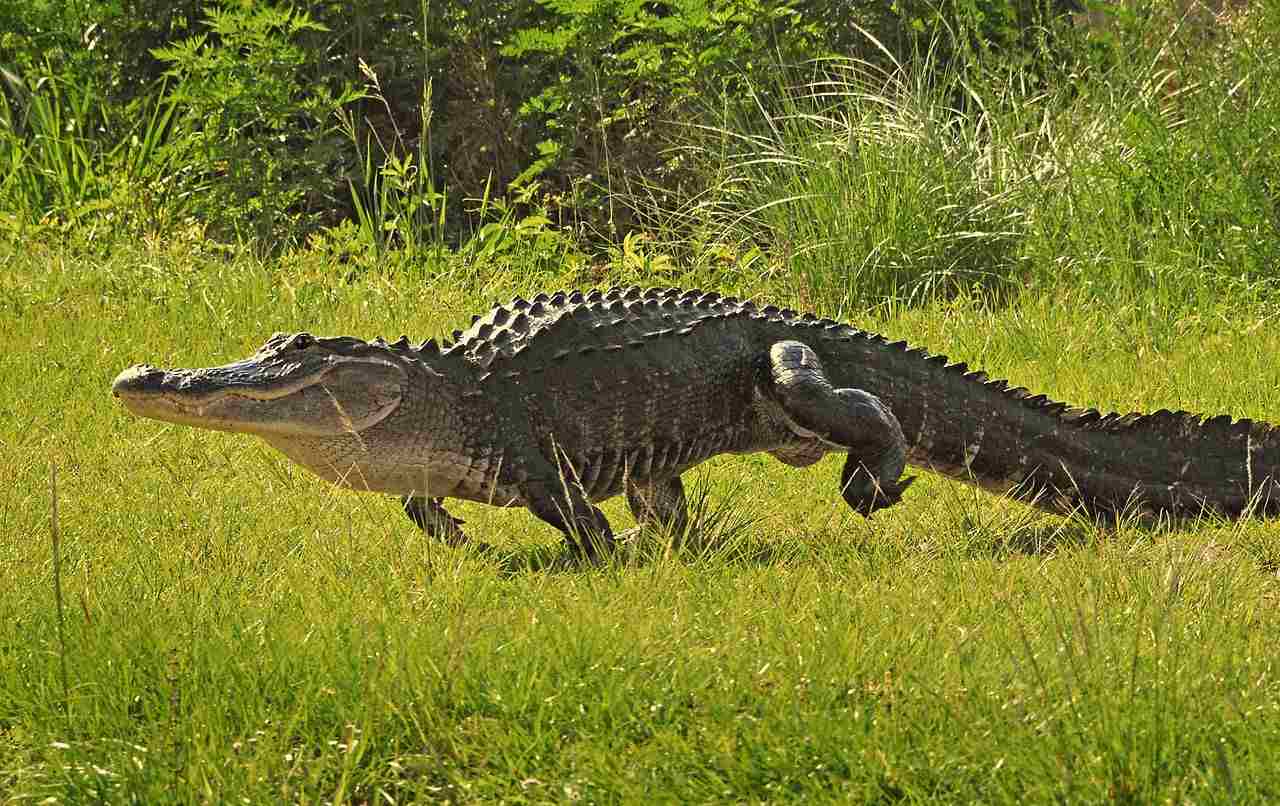
American Alligator:
Fast in short bursts, capable of reaching speeds up to 20 miles per hour (32 km/h)
Saltwater Crocodile:
Surprisingly fast in water, reaching speeds up to 18 mph (29 km/h)
Comparison:
Both exhibit impressive bursts of speed, but alligators may have a slight advantage on land.
Crocodiles excel in water, utilizing their streamlined bodies for efficient swimming.
Ecological Implications:
Varied speeds contribute to their effectiveness in different habitats, influencing hunting and escape strategies.
9. Agility:
American Alligator:
Agile in water and on land for short distances
Maneuverable in dense vegetation
Saltwater Crocodile:
Highly agile in water, capable of quick turns and maneuvers
Adaptable to various aquatic environments
Comparison:
Crocodiles generally exhibit superior agility, especially in aquatic settings.
Alligators demonstrate agility, particularly in their preferred freshwater habitats.
Ecological Implications:
Agility influences hunting success and ability to navigate diverse environments, shaping their roles in ecosystems.
10. Senses:
American Alligator:
Excellent sense of hearing and night vision
Tactile sensors on the skin help detect vibrations in water
Saltwater Crocodile:
Well-developed vision and sense of smell
Specialized sensors on the jaw for detecting movement in water
Comparison:
Both species have adapted senses, but the emphasis may differ.
Alligators rely on acute hearing and night vision, while crocodiles prioritize vision and smell.
Ecological Implications:
Sensory adaptations contribute to their efficiency as predators in different environments.
11. Overall Physical Capacity:
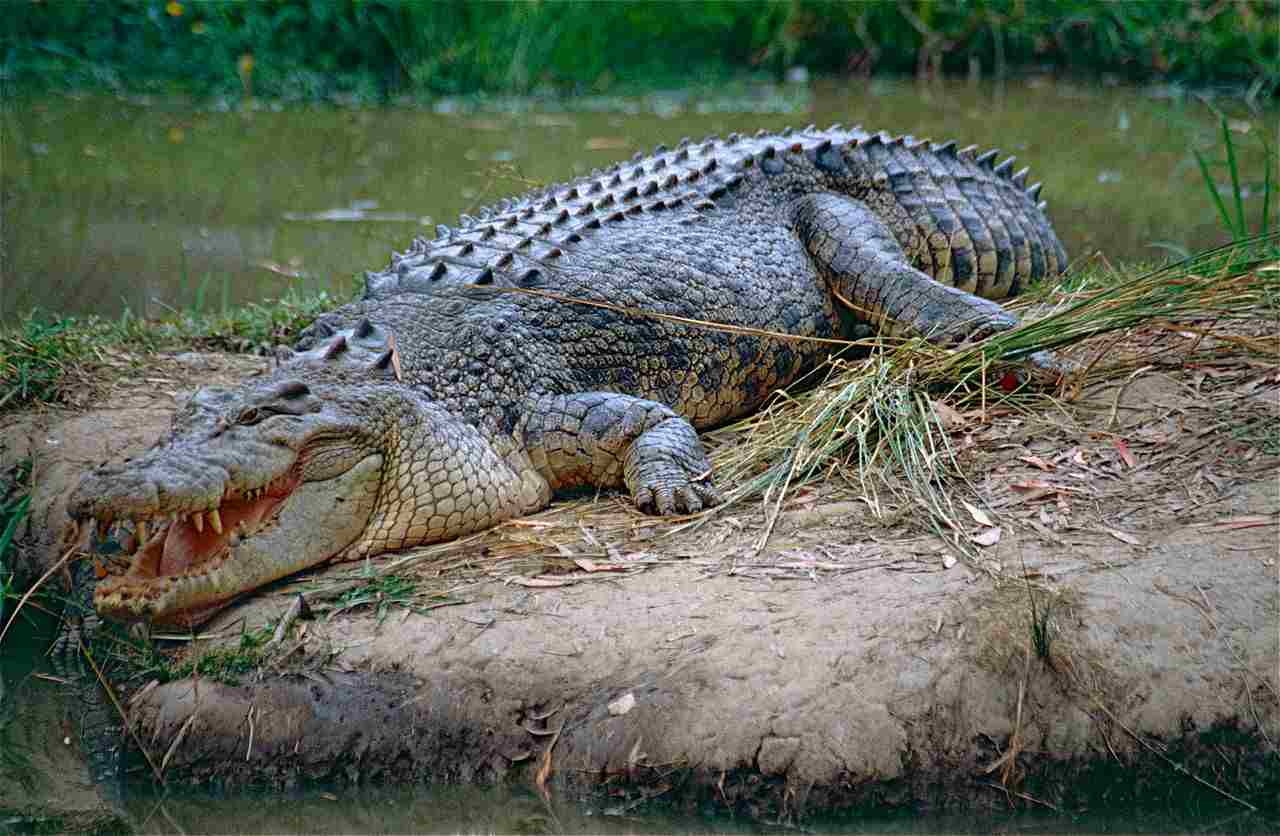
American Alligator:
Robust build, suited for ambush hunting
Adapted for bursts of speed and power
Saltwater Crocodile:
Streamlined body for efficient swimming
Enhanced agility and strength for capturing a variety of prey
Comparison:
Alligators and crocodiles have distinct physical capacities tailored to their ecological roles.
Crocodiles generally exhibit a more versatile physical design.
Ecological Implications:
Physical adaptations contribute to their effectiveness in occupying specific ecological niches.
12. Habitat Preference(s):
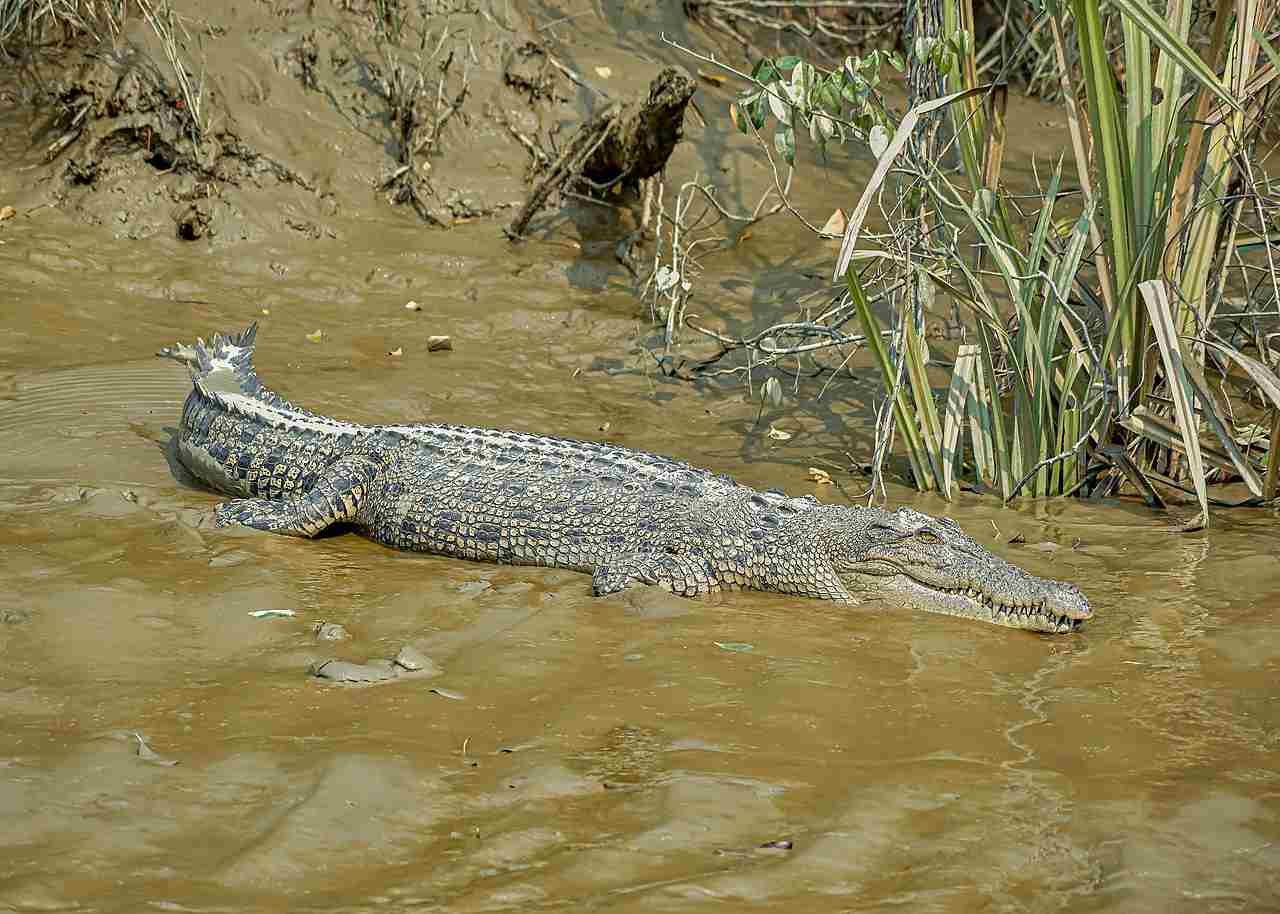
American Alligator:
Freshwater habitats, such as swamps, lakes, and rivers
Saltwater Crocodile:
Coastal habitats, estuaries, and mangrove swamps; can tolerate saltwater
Comparison:
Alligators predominantly inhabit freshwater environments.
Crocodiles show a broader tolerance, being found in both freshwater and saltwater habitats.
Ecological Implications:
Habitat preferences shape their interactions with other species and influence ecosystem dynamics.
13. Tracks:
American Alligator:
Clawed, webbed footprints with a distinctive tail drag mark
Saltwater Crocodile:
Similar clawed footprints but may lack the tail drag mark on land
Comparison:
Both leave characteristic tracks, but the tail drag mark is more pronounced in alligators.
Crocodile tracks may be more defined in aquatic environments.
Ecological Implications:
Tracking and identifying species based on prints contribute to ecological research and conservation efforts.
14. Lifespan:
American Alligator:
Typically 30 to 50 years in the wild
Saltwater Crocodile:
Can live over 70 years in the wild
Comparison:
Saltwater crocodiles generally have a longer lifespan than American alligators.
Differences in longevity contribute to population dynamics and ecological roles.
Ecological Implications:
Longer lifespans may impact reproductive strategies, population sizes, and overall ecosystem stability.
15. Mode of Feeding:
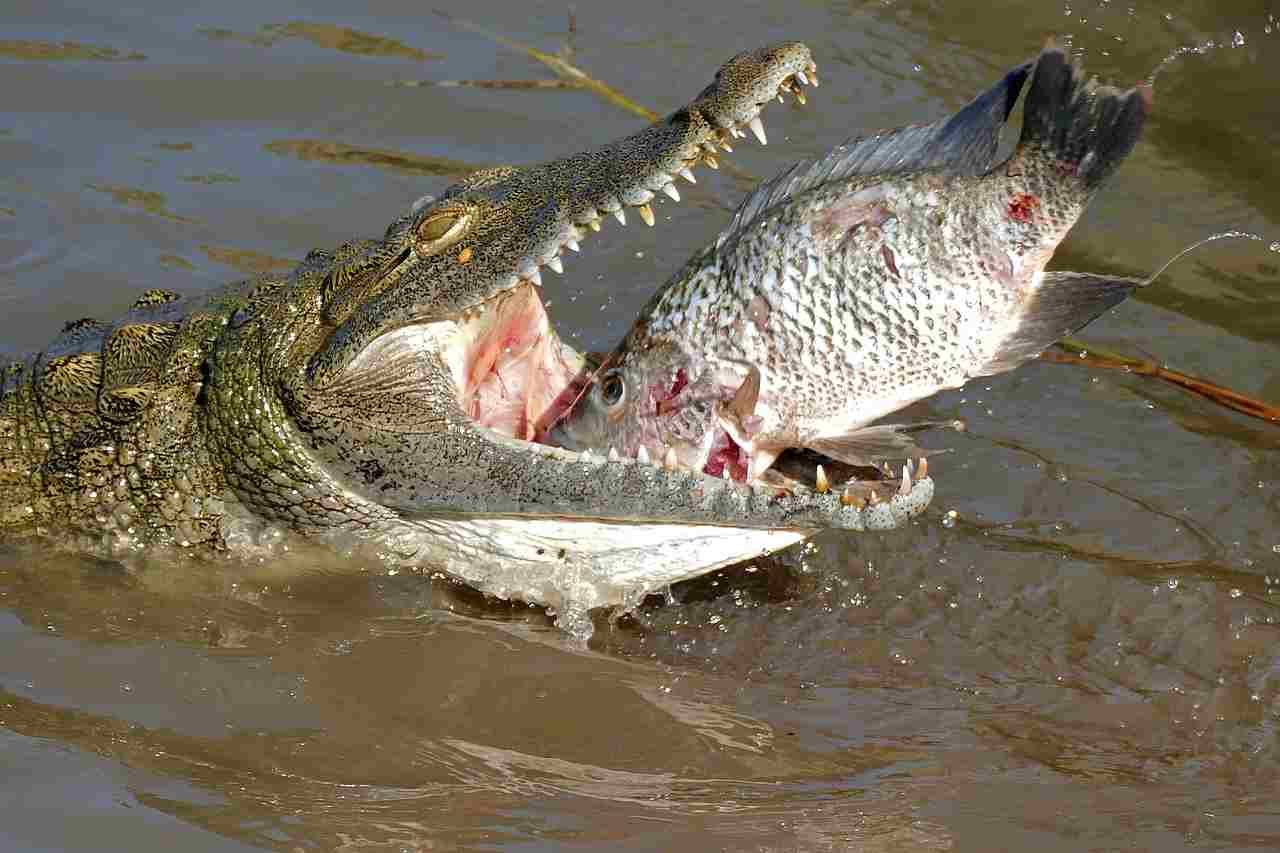
American Alligator:
Ambush predator; waits for prey to come close and then attacks
Eats a variety of aquatic animals, including fish, turtles, and small mammals
Saltwater Crocodile:
Opportunistic hunter; capable of preying on larger animals, including marine mammals
Known to hunt in both salt and freshwater habitats
Comparison:
Alligators primarily target smaller prey, while crocodiles are more versatile and can take on larger prey.
Differences in feeding behavior contribute to their ecological roles and impact prey populations.
Ecological Implications:
Varied diets influence competition with other predators and prey population control.
16. Intelligence:
American Alligator:
Exhibits basic problem-solving skills
Displays learned behaviors related to hunting and nesting
Saltwater Crocodile:
Considered highly intelligent among reptiles
Demonstrates complex hunting strategies and social behaviors
Comparison:
Both species display intelligence, but crocodiles are often regarded as more cognitively advanced.
Intelligence influences adaptability, foraging success, and interactions within ecosystems.
Ecological Implications:
Intelligent behaviors contribute to their ability to navigate and adapt to changing environmental conditions.
17. Social Behavior:
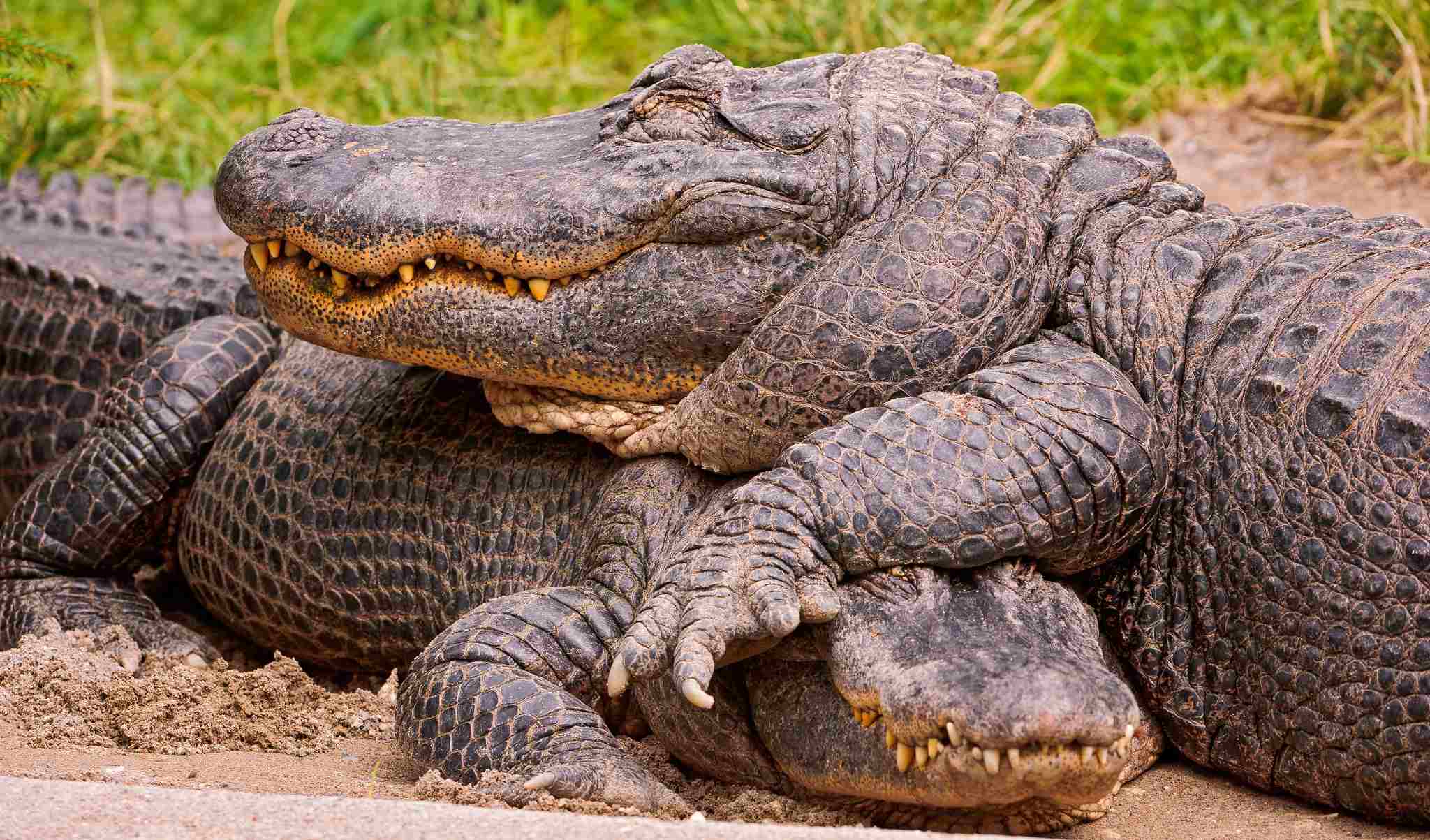
American Alligator:
Generally solitary, except during mating season or in specific basking areas
Tolerates the presence of other alligators in shared habitats
Saltwater Crocodile:
Can exhibit more social behavior, especially in shared basking areas
Dominance hierarchies may form, impacting interactions between individuals
Comparison:
Alligators tend to be more solitary, while crocodiles may display more complex social behaviors.
Social structures influence reproductive strategies and resource utilization.
Ecological Implications:
Social dynamics contribute to population health, reproduction, and territorial interactions within ecosystems.
18. Mode of Reproduction:
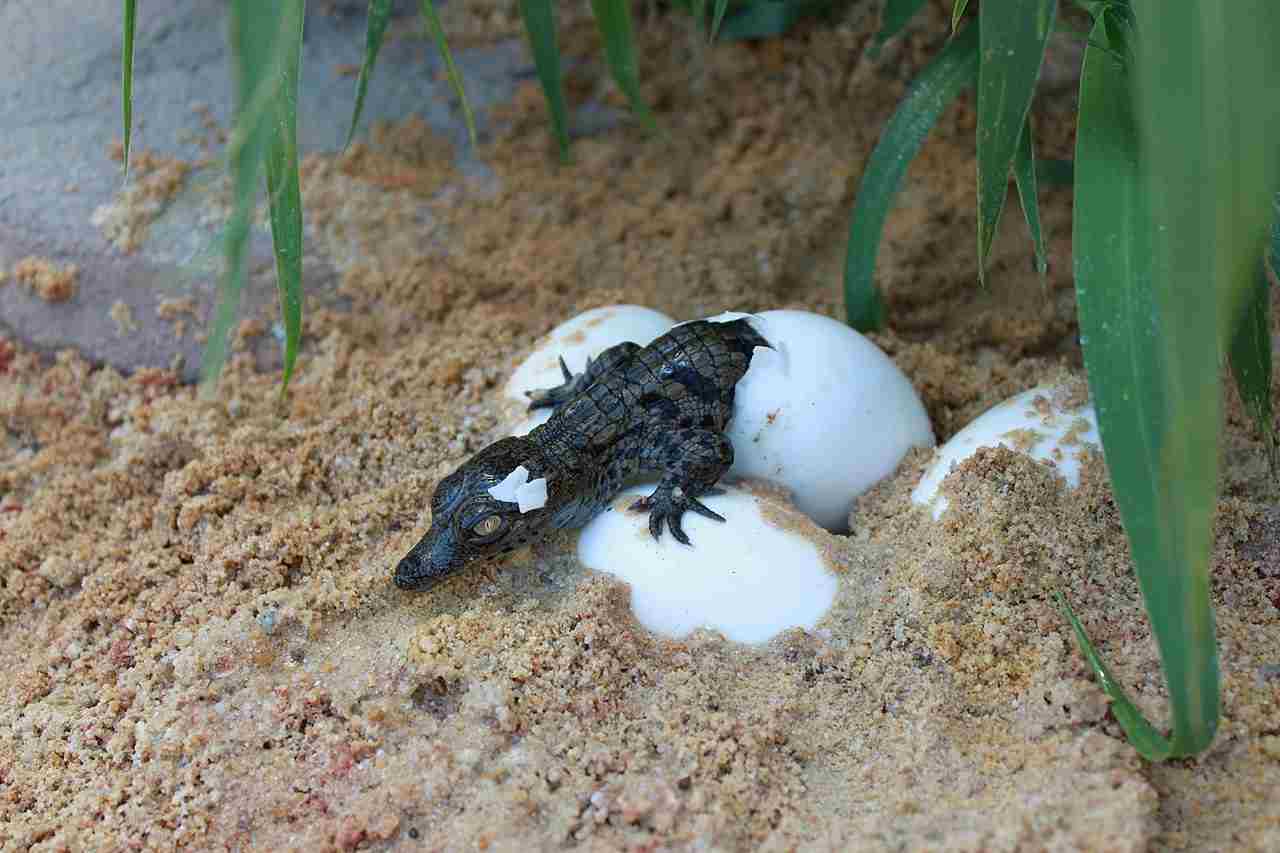
American Alligator:
Oviparous; females lay eggs in nests made of vegetation
Temperature-dependent sex determination (TSD) influences the sex of offspring
Saltwater Crocodile:
Oviparous; females build mound nests using vegetation and soil
Like all crocodilians, TSD affects the sex of the hatchlings
Comparison:
Both species exhibit similar modes of reproduction, relying on nest-building and TSD.
Reproductive strategies contribute to population dynamics and genetic diversity.
Ecological Implications:
Nesting behaviors impact habitat selection and influence the survival of offspring.
19. Parental Behavior:
American Alligator:
Female guards the nest and may assist hatchlings to water
Limited parental care beyond the initial stages
Saltwater Crocodile:
Females actively guard the nest and may assist hatchlings to water
Some reports suggest longer maternal protection
Comparison:
Both species show protective maternal behavior during the nesting period.
Variations in the duration of maternal care may impact juvenile survival rates.
Ecological Implications:
Parental care influences the survival of offspring, contributing to population stability.
20. Proximity to Human-Inhabited Areas:
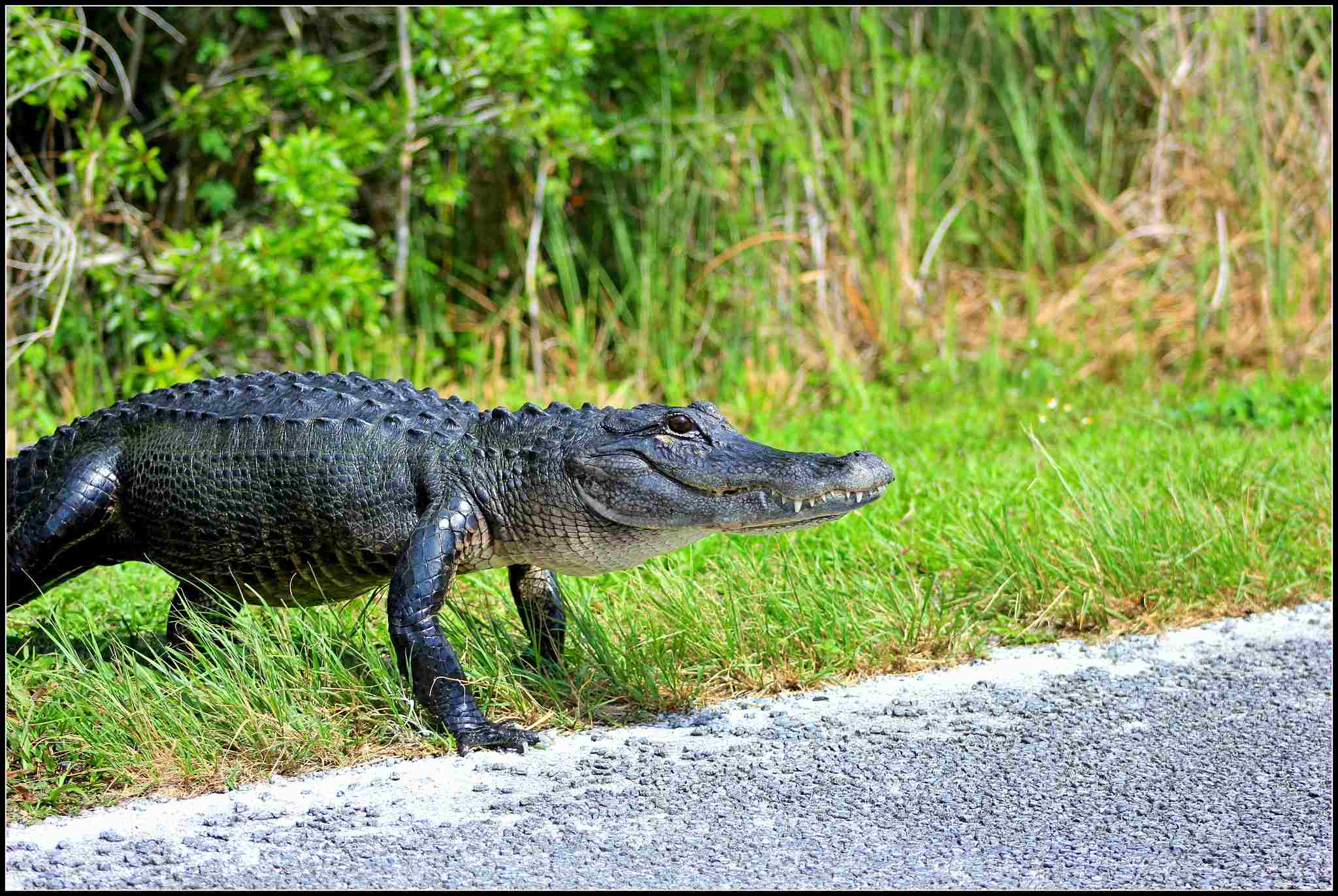
American Alligator:
Found in freshwater habitats near human settlements in the southeastern United States
Occasionally spotted in urban areas, leading to human-wildlife conflicts
Saltwater Crocodile:
Inhabits coastal areas, including mangroves and estuaries near human populations
Known to enter urbanized areas, increasing the potential for human-crocodile conflicts
Comparison:
Both species can coexist with humans, leading to encounters and potential conflicts.
Differences in habitat preferences influence the frequency and nature of interactions.
Ecological Implications:
Human-crocodile conflicts underscore the need for conservation measures and responsible wildlife management.
21. Behavior Toward Humans:
American Alligator:
Generally avoids confrontations with humans but may become aggressive if provoked
Instances of attacks on humans are relatively rare
Saltwater Crocodile:
More unpredictable and aggressive towards humans, especially in estuarine environments
Known for a higher number of attacks, potentially due to their larger size and territorial behavior
Comparison:
Saltwater crocodiles are generally considered more dangerous to humans than American alligators.
Differences in behavior influence the level of risk and the need for human-wildlife conflict management.
Ecological Implications:
Understanding behavior towards humans is crucial for implementing effective conservation and safety measures.
22. Danger Posed to Humans:
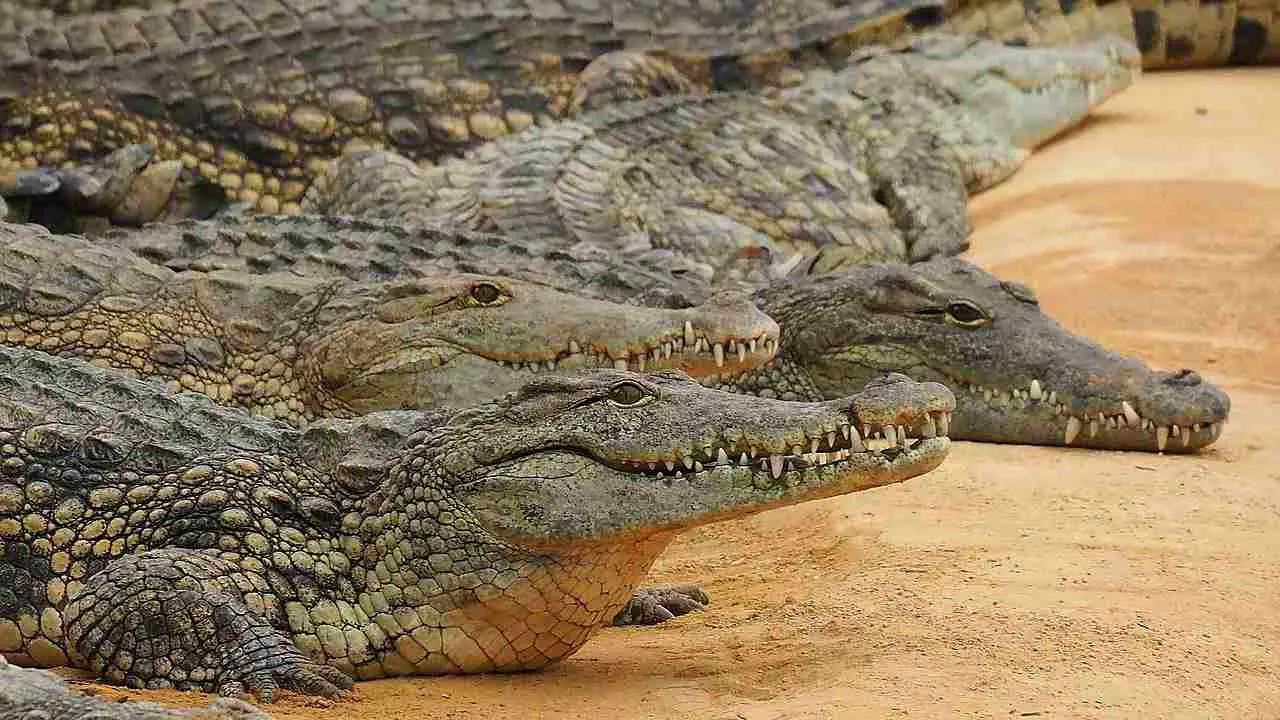
American Alligator:
Generally poses a low to moderate danger to humans
Rarely involved in fatal attacks; more likely to retreat than confront
Saltwater Crocodile:
Considered one of the most dangerous crocodilians to humans
Involved in a higher number of fatal attacks, particularly in estuarine environments
Comparison:
Saltwater crocodiles pose a higher danger to humans compared to American alligators.
Differences in size, aggression, and habitat preferences contribute to varying levels of risk.
Ecological Implications:
Human safety considerations are crucial for effective coexistence and conservation efforts.
23. Associated Precautions:
American Alligator:
Public education on avoiding feeding and approaching alligators
Encouraging responsible behavior in shared habitats
Saltwater Crocodile:
Strict guidelines for human activities in areas with known crocodile presence
Implementation of exclusion barriers in certain locations
Comparison:
Precautionary measures are essential for both species but may vary in stringency.
Adjustments to human behavior contribute to minimizing potential conflicts and risks.
Ecological Implications:
Human awareness and precautionary measures are integral to preserving the ecological roles of these species.
24. Conservation Status:
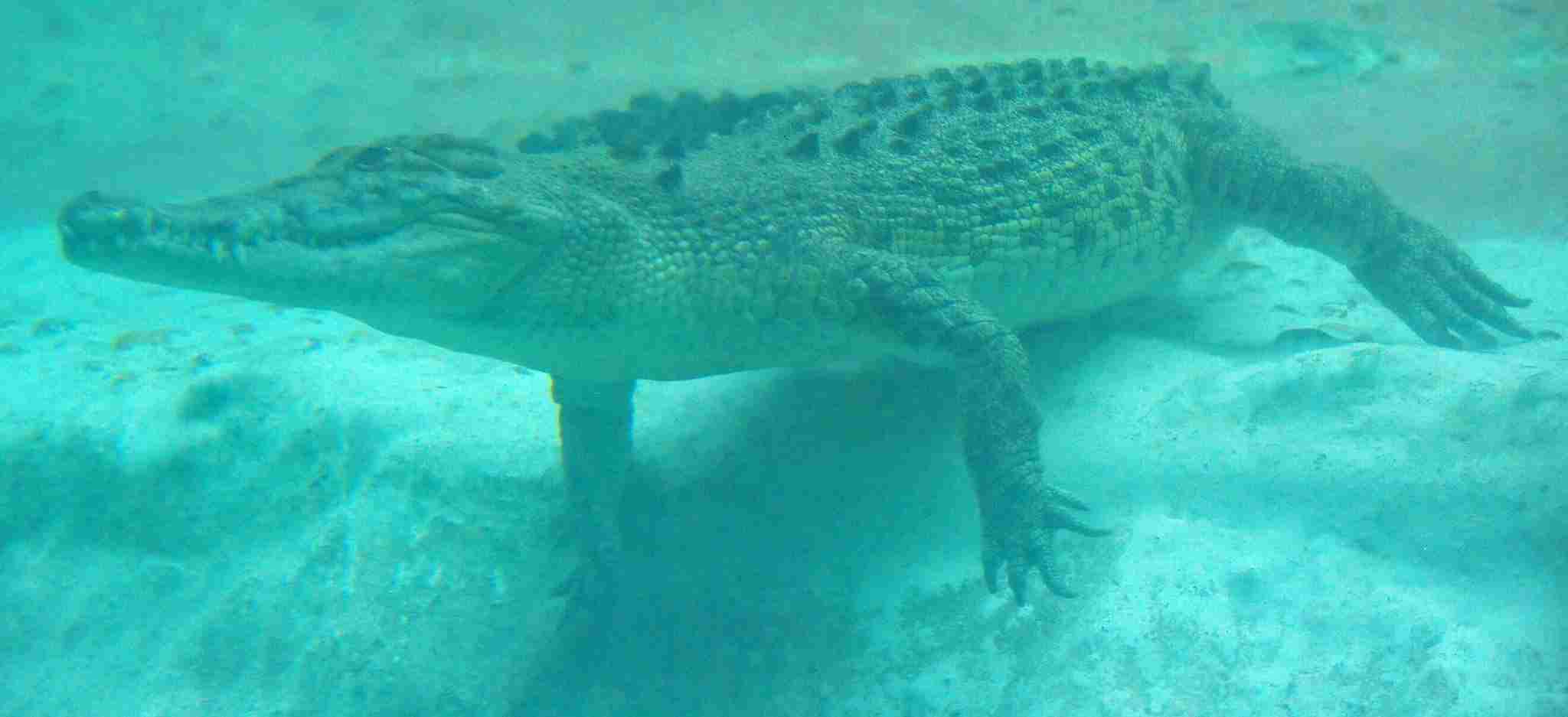
American Alligator:
Listed as “Least Concern” on the IUCN Red List
Population recovery after conservation efforts; regulated hunting in some regions
Saltwater Crocodile:
Listed as “Least Concern” globally but with regional variations
Conservation status may vary due to local threats and protection measures
Comparison:
Both species have relatively stable populations on a global scale.
Local variations in conservation status highlight the importance of regional conservation efforts.
Ecological Implications:
Conservation efforts contribute to maintaining balanced ecosystems and safeguarding biodiversity.
Summary of Comparison
Taxonomy:
Both belong to the class Reptilia and order Crocodylia but differ in family and genus.
Appearance:
American alligators have a broad, U-shaped snout and a rough, dark, armored skin.
Saltwater crocodiles exhibit a longer, V-shaped snout and a lighter, smoother skin.
Size:
Saltwater crocodiles are generally larger, with males exceeding 20 feet compared to alligator males at 15 feet.
Weight:
Saltwater crocodiles are significantly heavier, with adult males weighing over 2,000 pounds, while alligator males weigh 500-1,000 pounds.
Bite Force (PSI):
Saltwater crocodiles have a more powerful bite force, exceeding 3,000 PSI, compared to the alligator’s 2,125 PSI.
Physical Offensive Advantages:
Alligators excel in surprise attacks with a powerful bite.
Crocodiles use agility and a pointed snout for effective strikes, particularly in water.
Physical Defensive Advantages:
Alligators rely on tough, armored skin and quick land movements.
Crocodiles use a robust body structure and agility on both land and water.
Speed:
Both exhibit impressive bursts of speed, with alligators having a slight advantage on land, while crocodiles excel in water.
Agility:
Crocodiles generally exhibit superior agility, especially in aquatic settings.
Senses:
Alligators rely on acute hearing and night vision, while crocodiles prioritize vision and smell.
Overall Physical Capacity:
Crocodiles generally exhibit a more versatile physical design.
Habitat Preference(s):
Alligators prefer freshwater habitats, while crocodiles can tolerate both fresh and saltwater.
Tracks:
Both leave clawed footprints, but the tail drag mark is more pronounced in alligators.
Lifespan:
Saltwater crocodiles generally have a longer lifespan than American alligators.
Mode of Feeding:
Alligators primarily target smaller prey, while crocodiles can take on larger prey.
Intelligence:
Crocodiles are often regarded as more cognitively advanced.
Social Behavior:
Crocodiles tend to exhibit more complex social behaviors.
Mode of Reproduction:
Both species are oviparous and exhibit temperature-dependent sex determination.
Parental Behavior:
Both show protective maternal behavior during the nesting period.
Proximity to Human-Inhabited Areas:
Both species can coexist with humans, leading to encounters and potential conflicts.
Behavior Toward Humans:
Saltwater crocodiles are generally considered more dangerous to humans than American alligators.
Danger Posed to Humans:
Saltwater crocodiles pose a higher danger to humans compared to American alligators.
Associated Precautions:
Precautionary measures are essential for both species but may vary in stringency.
Conservation Status:
Both are listed as “Least Concern” globally, but local variations exist.
Conclusion:
I. Similarities:
Both American alligators and saltwater crocodiles are apex predators in their respective habitats.
They play vital roles in maintaining ecosystem balance and biodiversity.
II. Differences:
Differences in size, habitat preferences, behavior, and danger to humans underline their unique ecological niches.
Conservation strategies need to consider species-specific factors for effective protection and coexistence.




